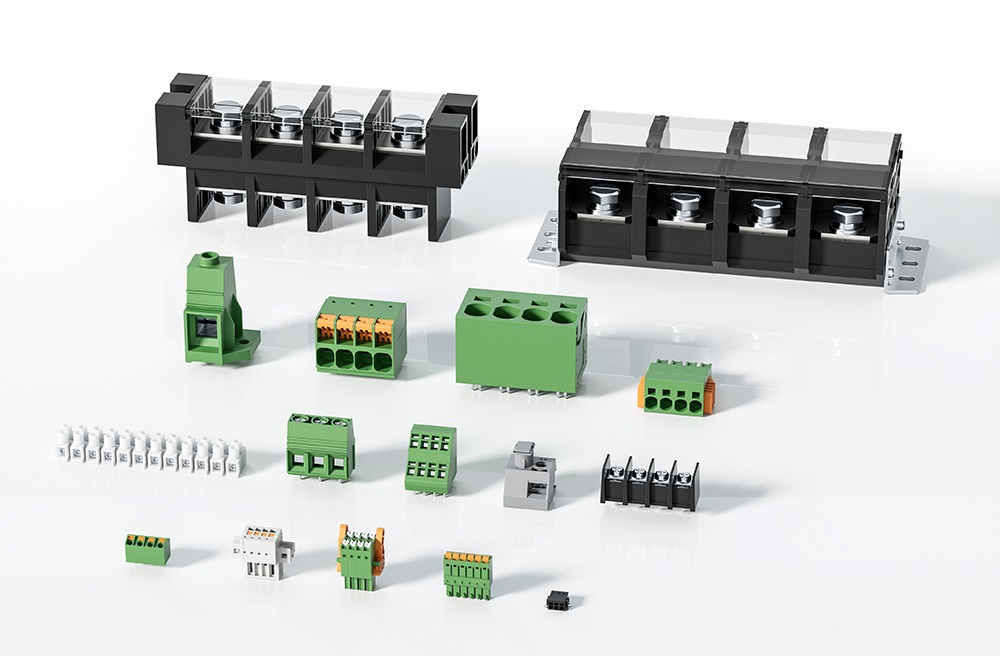- All
- Product Name
- Product Keyword
- Product Model
- Product Summary
- Product Description
- Multi Field Search
Views: 73 Author: Site Editor Publish Time: 2023-11-27 Origin: Site
Terminal blocks are already widely used in industrial and commercial applications, and as the Internet of Things (IoT) continues to grow, terminal blocks are likely to play a crucial role in the connectivity of IoT devices. In this article, we will discuss the future of terminal blocks in the Internet of Things.
The Internet of Things is a rapidly expanding field that involves connecting everyday devices to the internet, allowing them to communicate with each other and share data. As more devices become connected to the internet, the need for reliable and secure connections becomes increasingly critical. Terminal blocks offer a secure and reliable way to connect IoT devices to each other and to the internet.
One of the main advantages of using terminal blocks in IoT applications is their scalability. Terminal blocks can be used in small-scale applications, such as connecting sensors to a microcontroller, or in larger-scale applications, such as connecting a network of devices to the internet. As IoT networks become larger and more complex, terminal blocks can help to simplify the wiring process and reduce installation time and costs.
Another advantage of terminal blocks in IoT applications is their flexibility. Terminal blocks can be used with a wide range of devices, including sensors, controllers, and other IoT devices. They can support various types of signals, including analog, digital, and power signals, making them ideal for IoT applications.

In addition to their flexibility and scalability, terminal blocks also offer a high level of reliability and safety. They provide a secure connection between devices, reducing the risk of data loss or corruption, and protecting against electrical hazards such as short circuits or electrical arcing.
As IoT networks become more widespread, the demand for terminal blocks that can support wireless communication protocols such as Bluetooth, Wi-Fi, and Zigbee is likely to increase. These wireless protocols offer several advantages over traditional wired connections, including increased flexibility and ease of installation. However, they also present unique challenges when it comes to reliable signal transmission and power management. Terminal blocks that can support wireless protocols while maintaining a high level of reliability and safety will be critical to the success of IoT networks.
Another area where terminal blocks are likely to play a significant role in the future of IoT is in power management. As more IoT devices are deployed, power management becomes increasingly important. Terminal blocks can be used to manage power distribution and ensure that devices receive the correct amount of power. They can also be used to provide surge protection and prevent power spikes from damaging sensitive electronic components.
In conclusion, terminal blocks are likely to play a critical role in the future of the Internet of Things. They offer a reliable and secure way to connect IoT devices to each other and to the internet, and their scalability and flexibility make them ideal for IoT applications. As IoT networks become larger and more complex, terminal blocks that can support wireless communication protocols and power management will be essential to the success of these networks.
A terminal block is a compact, insulated base with metal contacts that lets you clamp, join, and distribute conductors without soldering. If you’ve ever routed power to a drive, brought sensor leads into a controller, or handed off field wiring to a PCB, you’ve used one. Understanding what is a term
As a Engineer ,It is very important to choose globally recognized premium terminal blocks .these manufacturersas below: Phoenix Contact, WAGO, Weidmüller, Eaton, Molex, Amphenol, Harting, and Shanye Electronics (subsidiary of Kefa Electronics). These industry leaders collectively dominate the $4.6
This article covers the technical features of spring-loaded and push-in terminals, and both the advantages and disadvantages of these technologies when it comes to installation practices, commissioning, footprint and authorisation for the North American market. Why do we need spring terminal block ?
Wiring a terminal block correctly is a fundamental skill in electrical work, ensuring safe and reliable connections. This article will help you to understand the essential steps, from preparing your wires to securing them properly within various terminal block types.ContentWhat are Terminal Blocks?R
What is terminal block ?terminal block, also known as a connection terminal, is a modular block used in electrical and electronics systems to connect and secure electrical wires or cables. It serves as a convenient and organized way to make electrical connections, whether for power distribution, sig
Terminal electronics is the key point at which a conductor from a electronic component, device or network comes to an end.Terminal may also refer to an electrical connector at this endpoint, acting as the reusable interface to a conductor and creating a point where external circuits can be connected